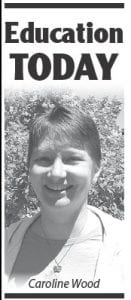As our school year is drawing to a close, I am pleased to submit my first Education Today contribution. I believe “Technology—its impact on education” is a very important topic for us to consider. With my first six months as Birch Grove Community School director almost complete, I know firsthand the far-reaching impact technology has to our children.
Technology shapes our lives and education is no exception. There are impacts to the Minnesota Department of Education, state and school assessments, and rural access requirements for real world experience for children of all ages.
This year, the Minnesota Department of Education has sought to find out just how much technology is impacting school finance. There has been an entirely separate “UFARS” coding structure created for technology expenses. UFARS exists as a means to code educational funding and the acronym stands for Uniform Financial Accounting Reporting Standards.
This year several changes to state testing are causing what some call “unfunded mandates” to impact schools across the nation. In a local example, maintaining automated data processing equipment and extending the life of such assets has been a priority. Fiscal responsibility drives schools to keep equipment operational as long as possible. This can result in dated or obsolete equipment facing new hardware or software expectations. Rural schools are at a disadvantage as the infrastructure of their technology can adversely impact the implementation or ability to meet current MDE requirements.
For Cook County, the advance of broadband has positively impacted schools allowing future upgrades to be possible. Placing current technology in the hands of children can be costly, but it can also greatly reduce spatial needs (new equipment is mobile and multi-use).
This year we executed an interim technology solution that was supported entirely by donations, cause marketing fundraising, and upcycling our obsolete equipment. This type of innovative solution can reduce costs of integrating new technology in the classroom.
In our solution we chose iPads. They had the ability for us to use them for end of year state testing or Minnesota Comprehensive Assessment (MCAs), in house Measure of Academic Progress (MAPs) assessments, and curriculum software for reading, English language, and science support. They ran smoothly for assessments, reduced classroom computer spaces by two-thirds, and allowed an entire room to be returned to daily use from a static desktop lab.
Every school’s technology plan and needs are going to be different based on age of existing equipment, age of students using the equipment, and the operational capabilities of their infrastructure. The state wants to assure that schools are using technology in a fiscally responsible manner. Everyone wants to provide children with the type of education that will prepare him or her for future careers. The rural location of our county and schools should not prevent the experience or potential of our students.
In my prior career as a United States Air Force air traffic controller, I experienced firsthand the necessity exposure to technology has on our nation. Children need to build their skills from elementary age on in order to prepare them for the workforce we know exists in our world today.
That means technology is impacting education today – even our local schools. We have unique challenges and opportunities in meeting the need for technology to be in our schools, today. I am happy to have shared just one example.
Each month a representative of our local schools will offer thoughts in Issues in Education. This month’s contributor is Caroline R. Wood, MS, Birch Grove Community School director.



Leave a Reply